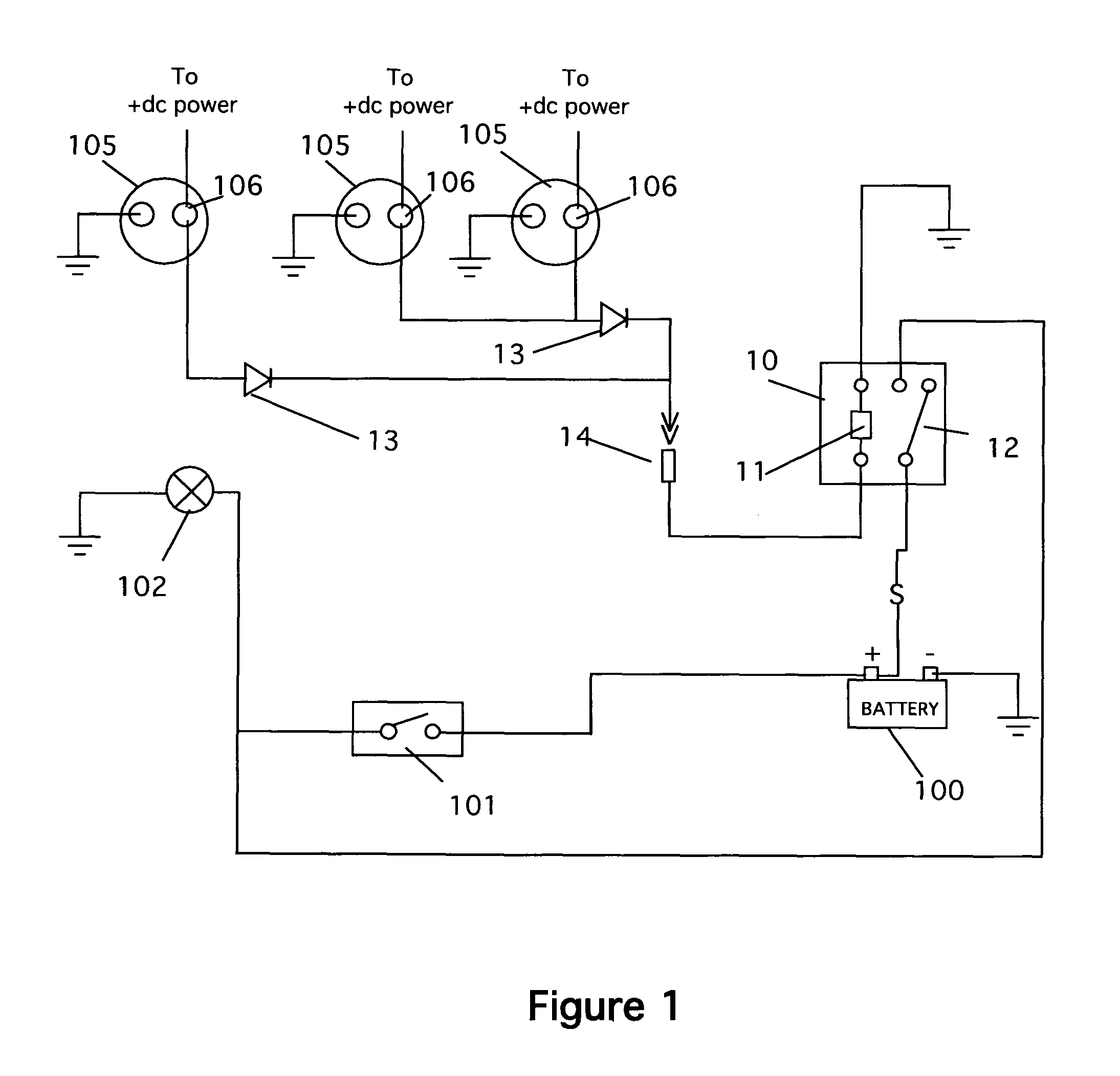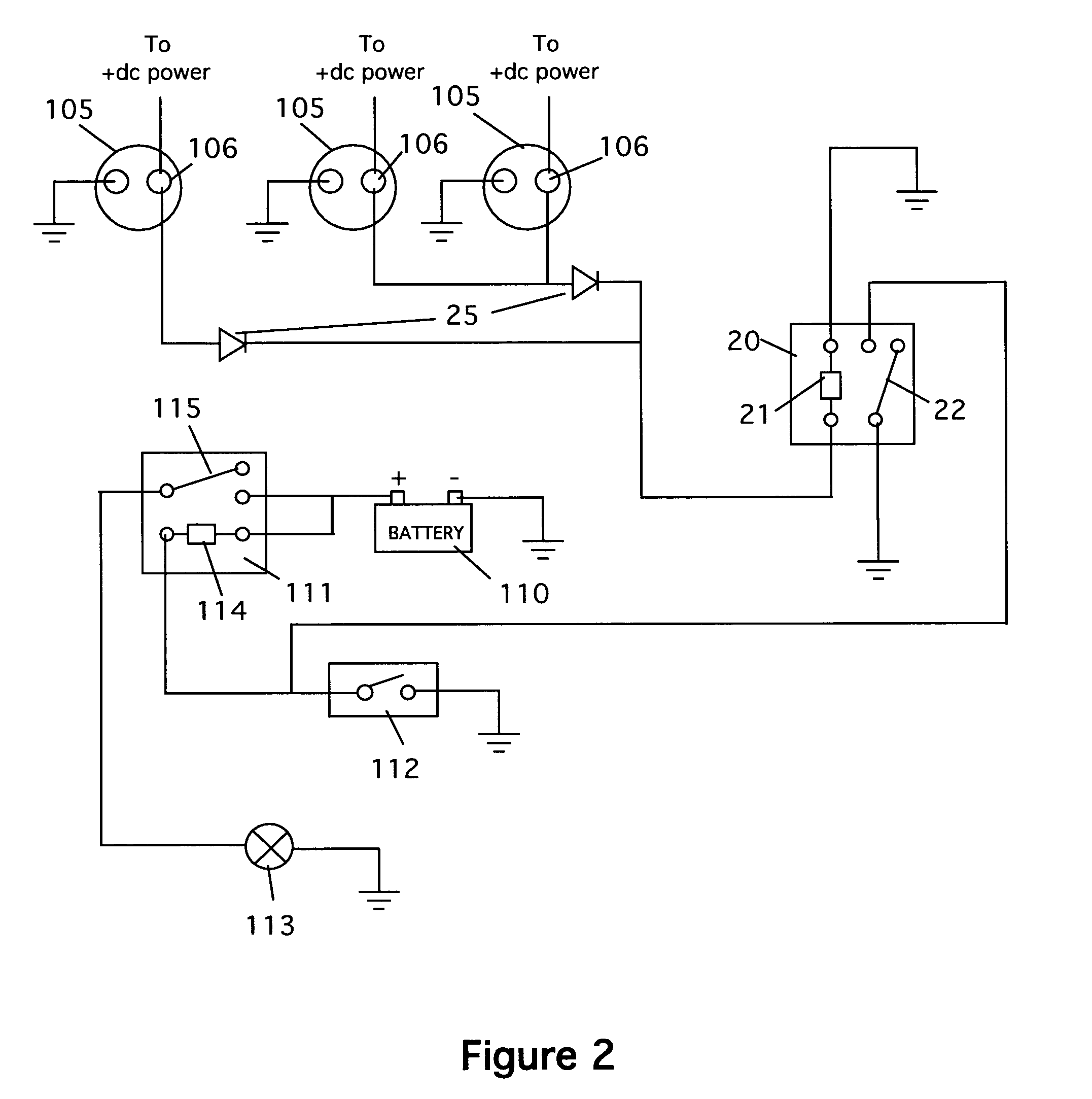Brake light switch for engine brake systems
- Summary
- Abstract
- Description
- Claims
- Application Information
AI Technical Summary
Problems solved by technology
Method used
Image
Examples
Embodiment Construction
[0011]Referring now to FIG. 1, the basic positive switch system contains a power source 100, which is typical one of the vehicle batteries or main engine power source, a brake switch 101, which is typically attached to the brake pedal, and the set of brake lights 102. Under ordinary circumstances, when the driver engages the brakes by pressing on the foot pedal, switch 101 causes the brake lights 102 to illuminate. FIG. 1 shows the additional circuits used to illuminate the brake lights when the engine brakes are engaged.
[0012]FIG. 1 shows the circuit of the instant invention. It includes an engine brake operating system that includes three brake solenoids 105. These solenoids are used to activate the engine brakes. Typically, they are operated through switches (not shown) mounted in the truck cab. When the switches are thrown, positive power is sent to the solenoids positive terminals to engage the solenoids. In most cases, large trucks employ three solenoids that can be engaged in...
PUM
 Login to View More
Login to View More Abstract
Description
Claims
Application Information
 Login to View More
Login to View More - R&D
- Intellectual Property
- Life Sciences
- Materials
- Tech Scout
- Unparalleled Data Quality
- Higher Quality Content
- 60% Fewer Hallucinations
Browse by: Latest US Patents, China's latest patents, Technical Efficacy Thesaurus, Application Domain, Technology Topic, Popular Technical Reports.
© 2025 PatSnap. All rights reserved.Legal|Privacy policy|Modern Slavery Act Transparency Statement|Sitemap|About US| Contact US: help@patsnap.com



